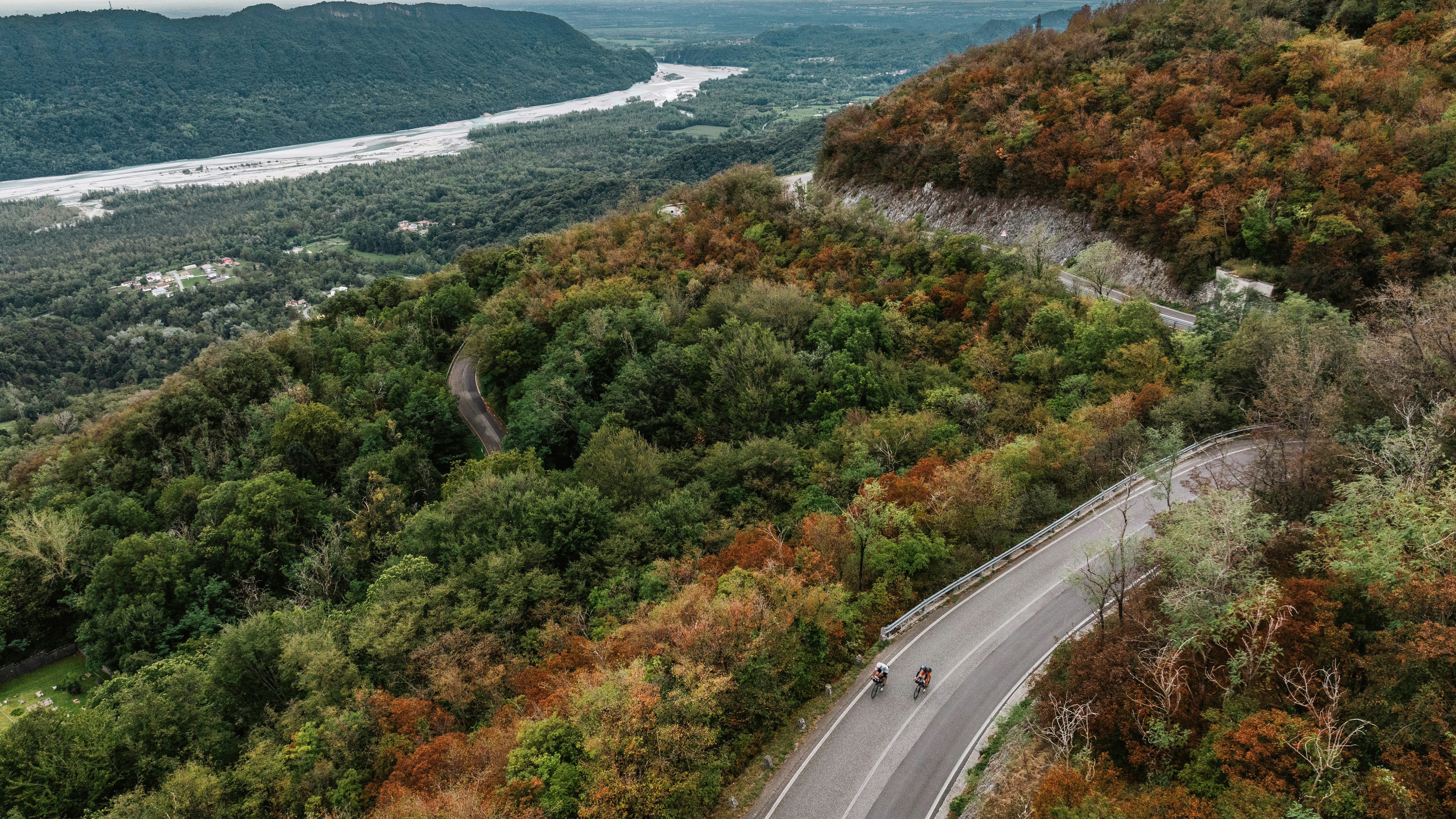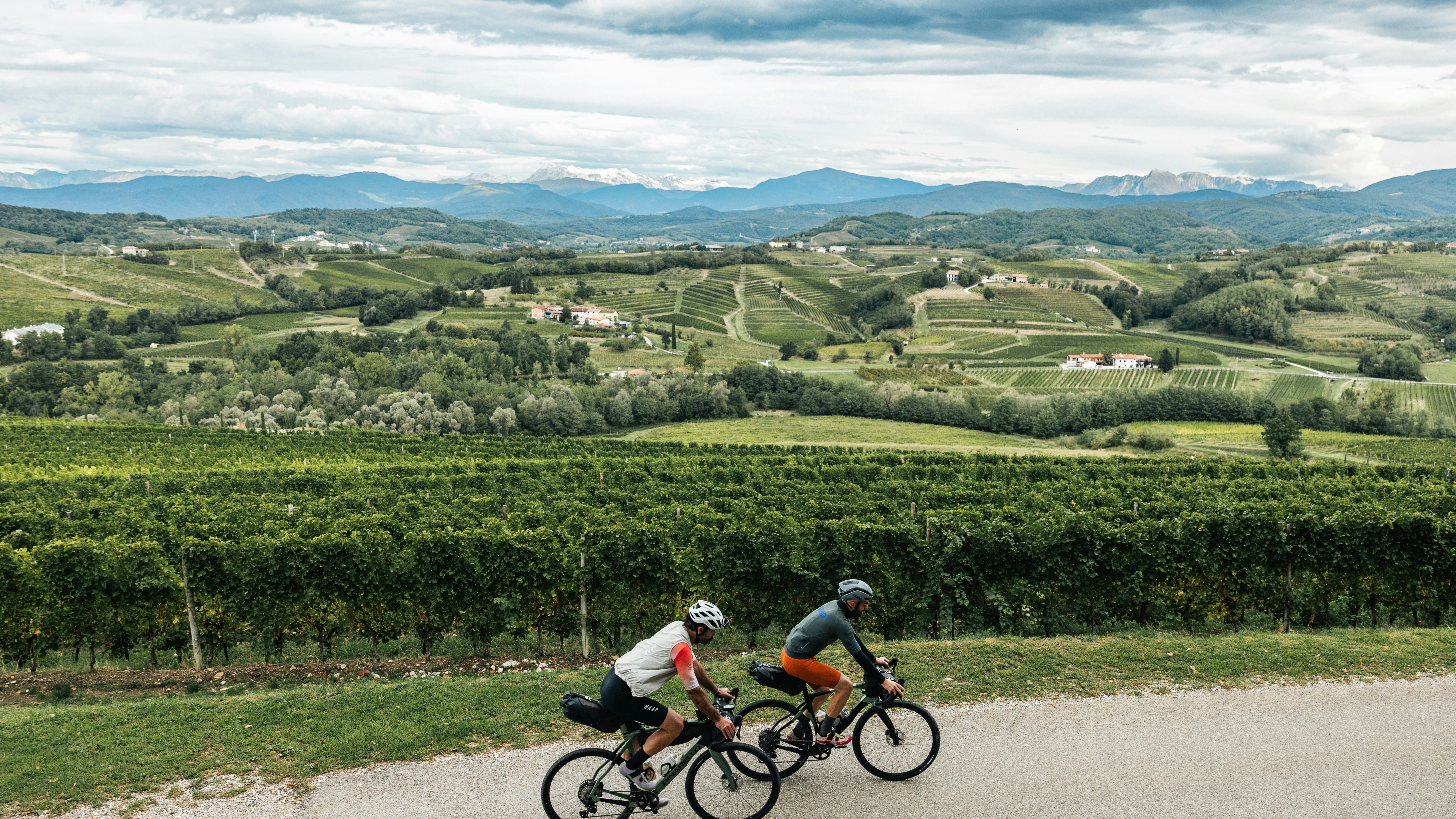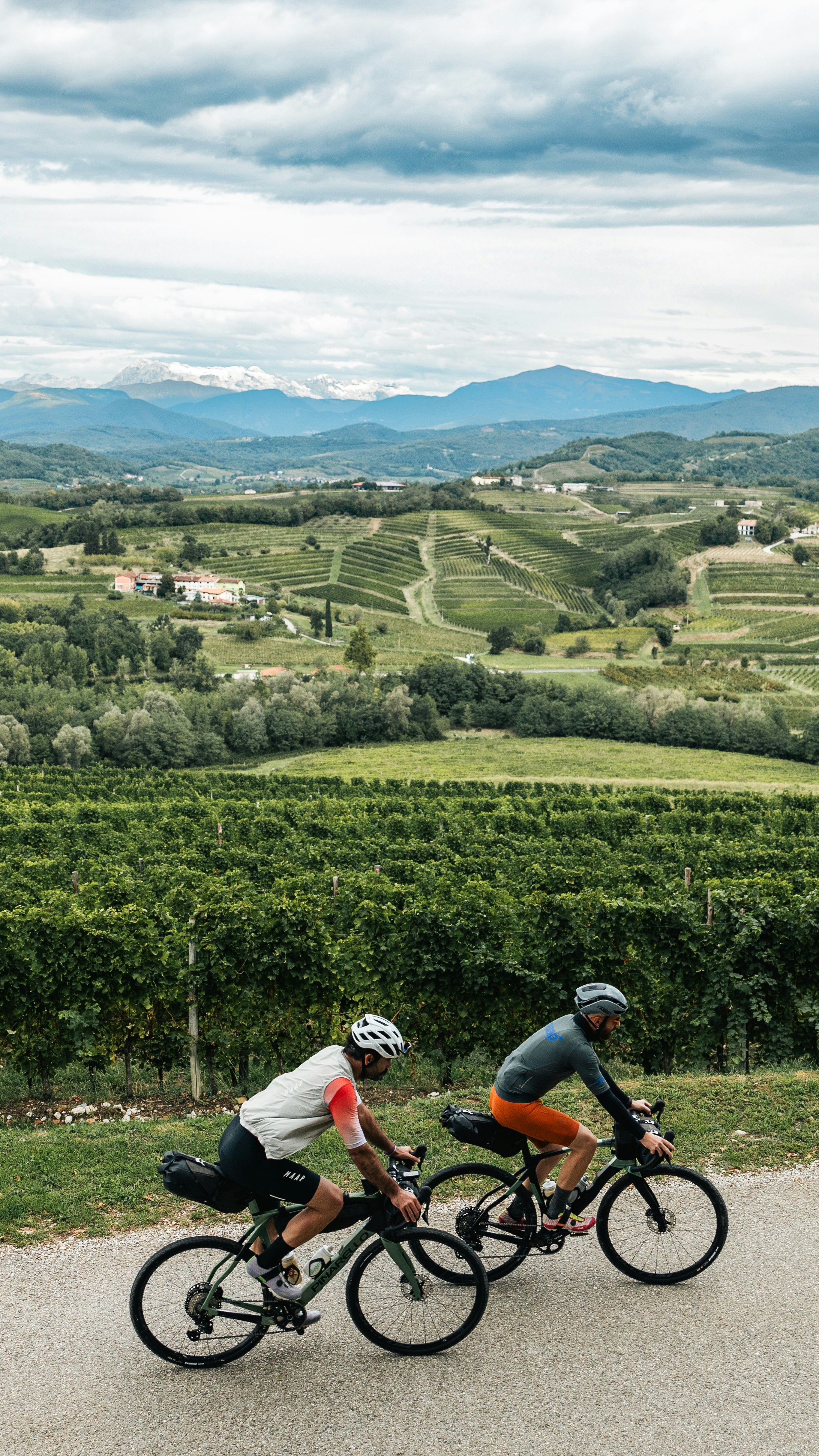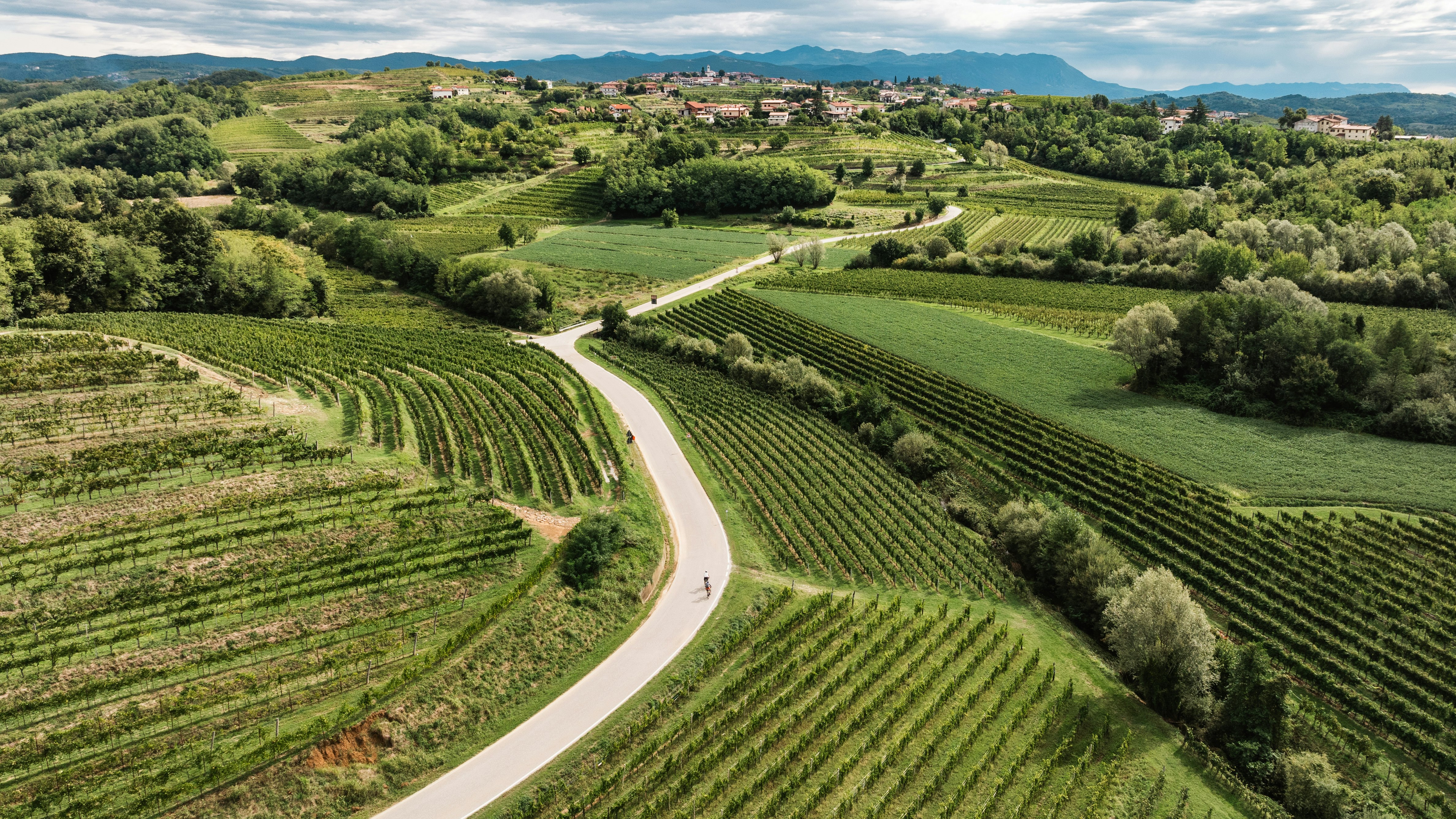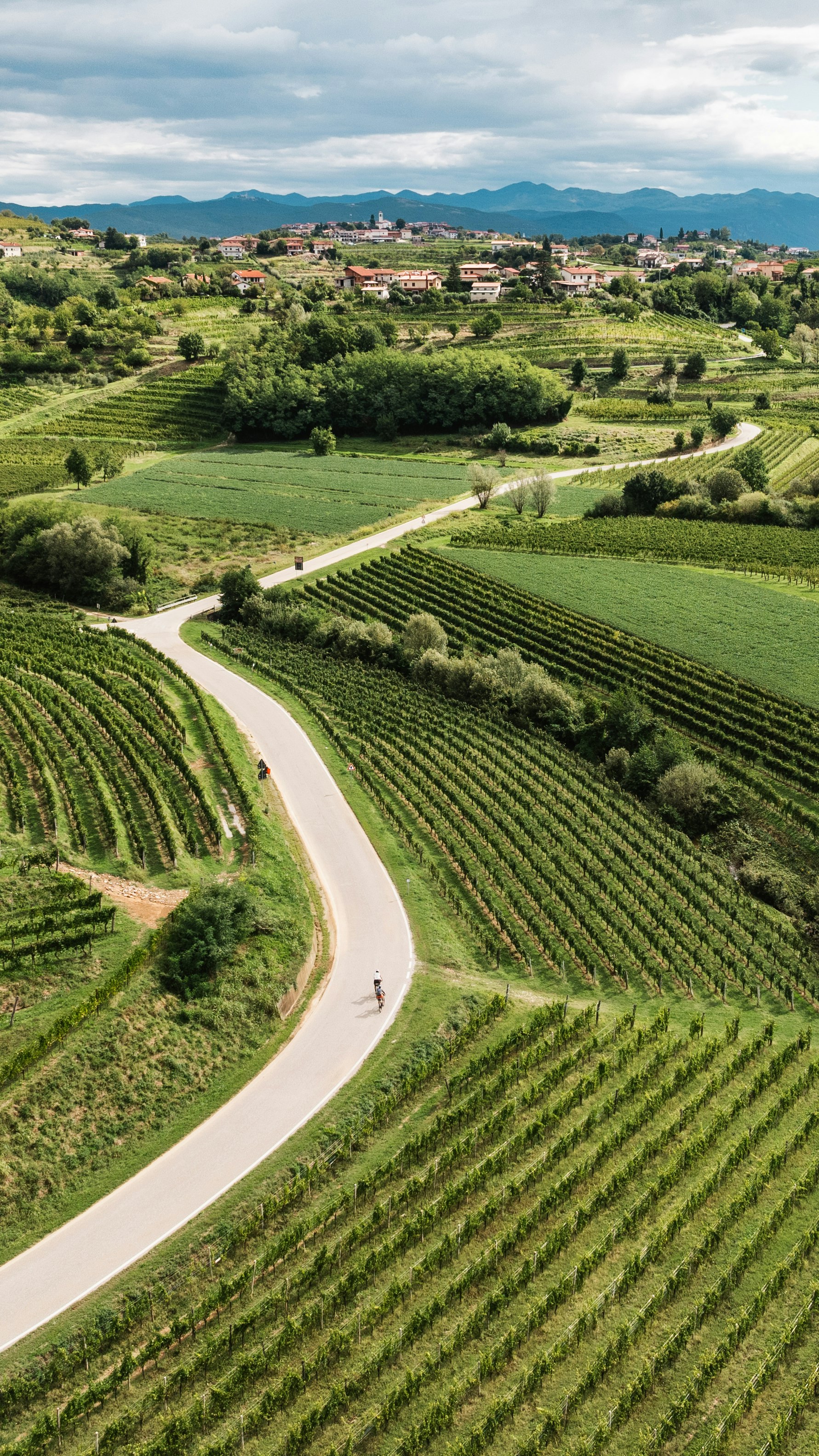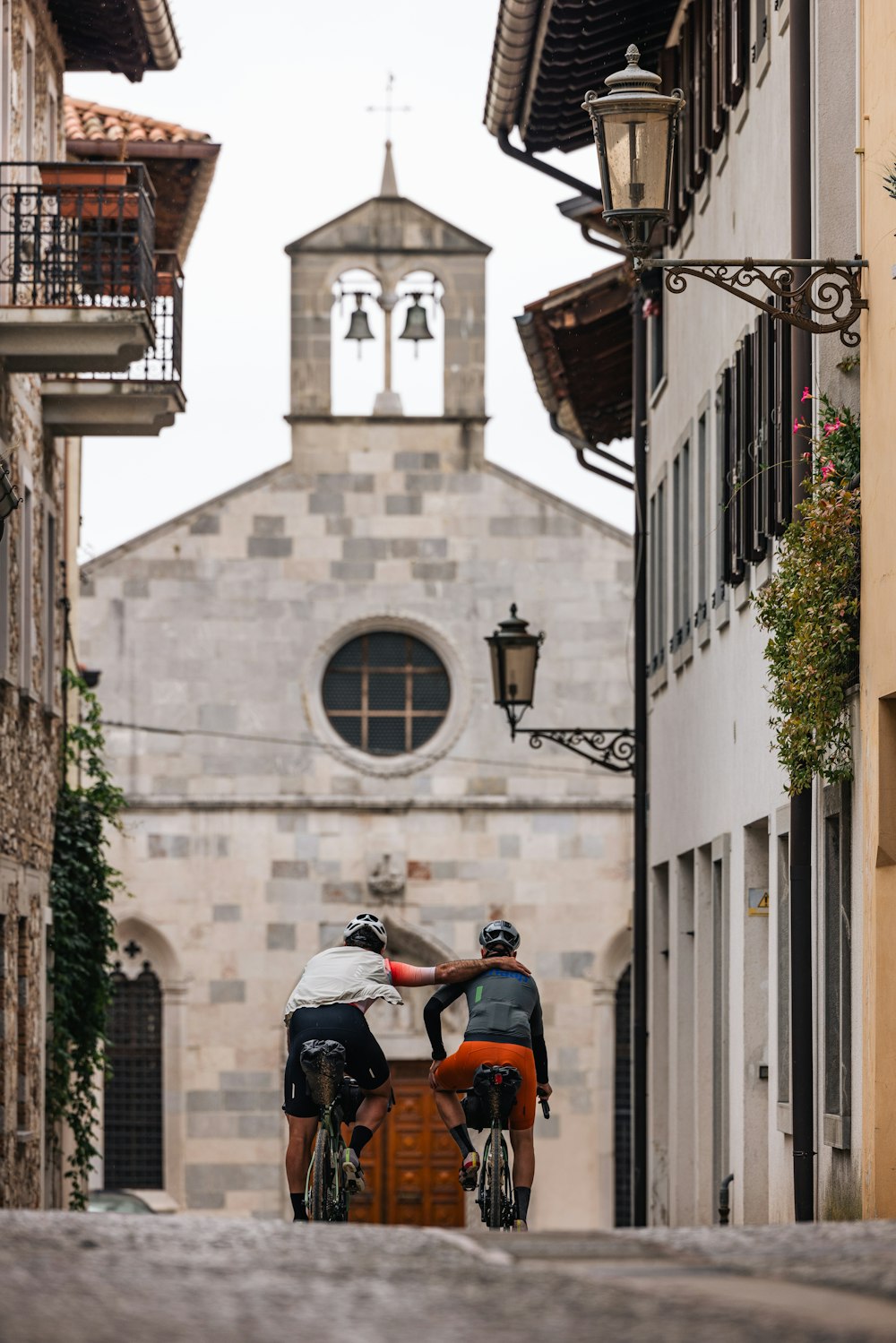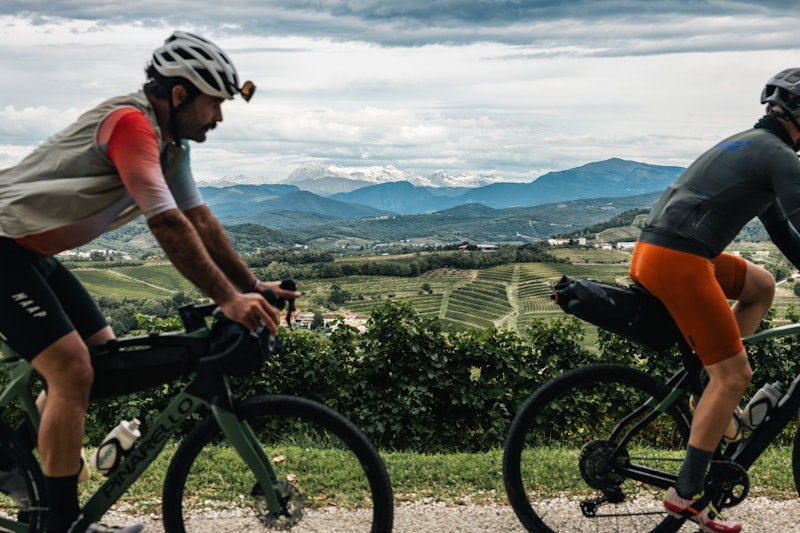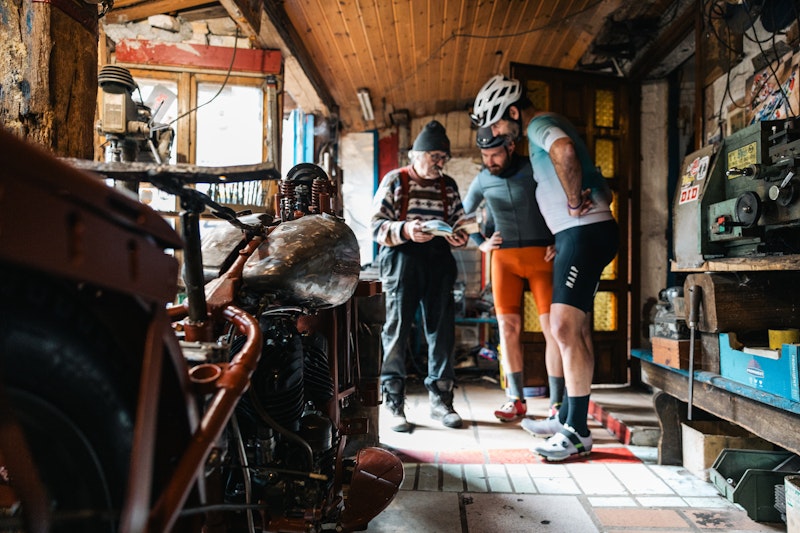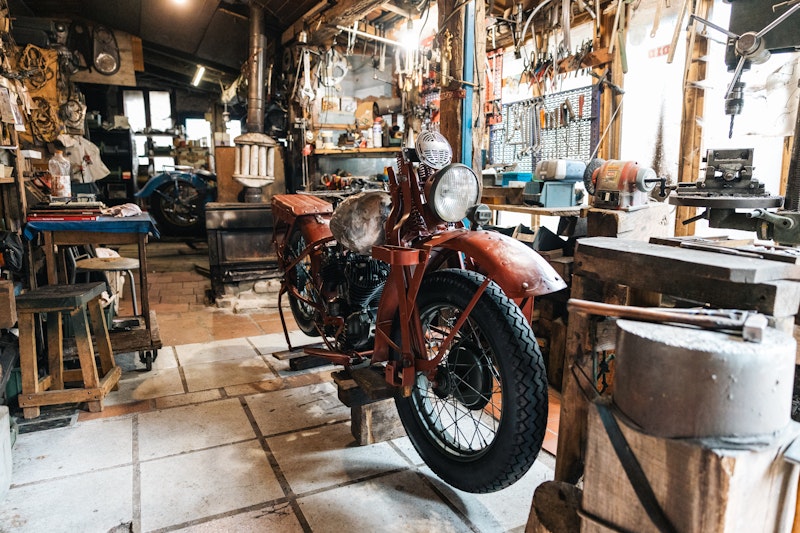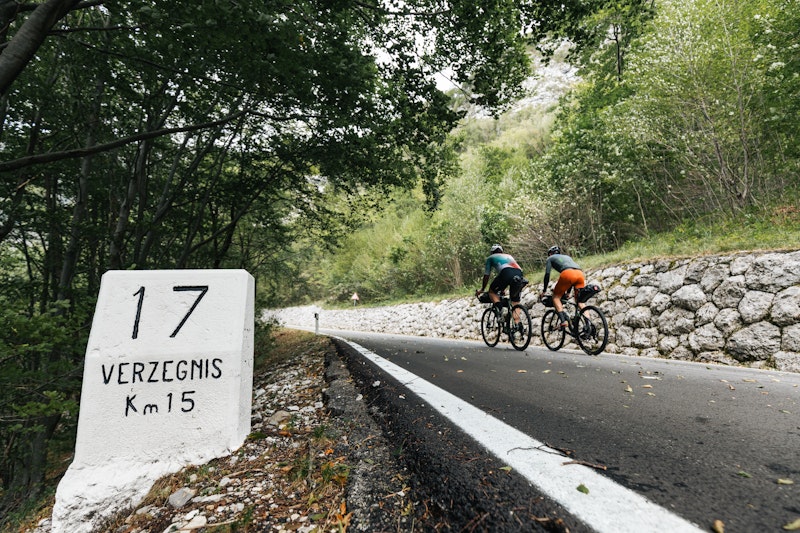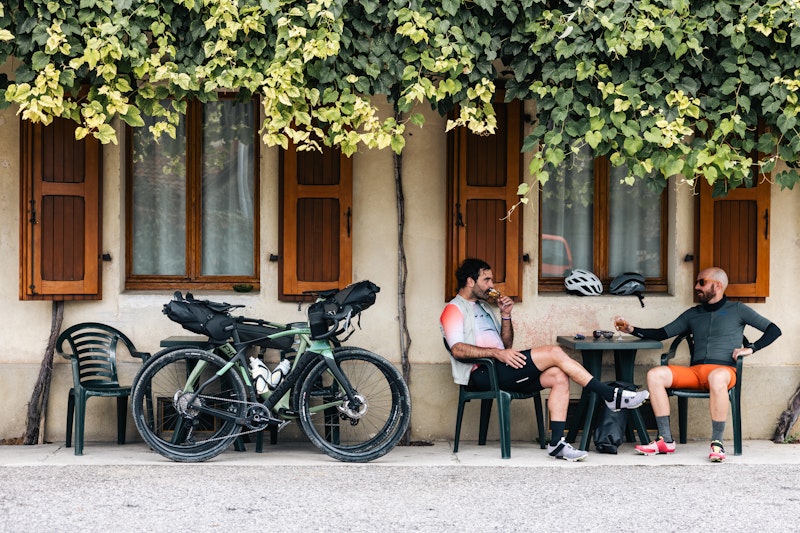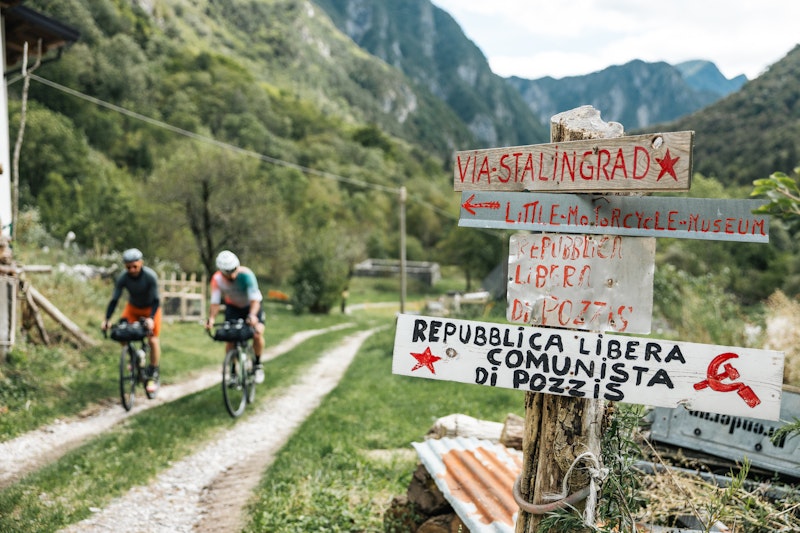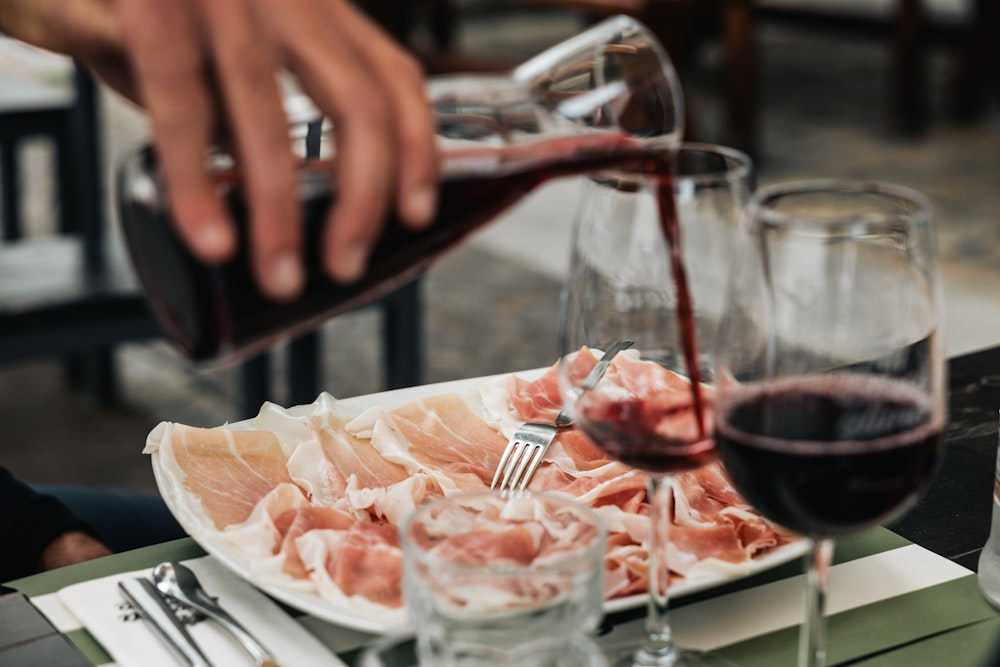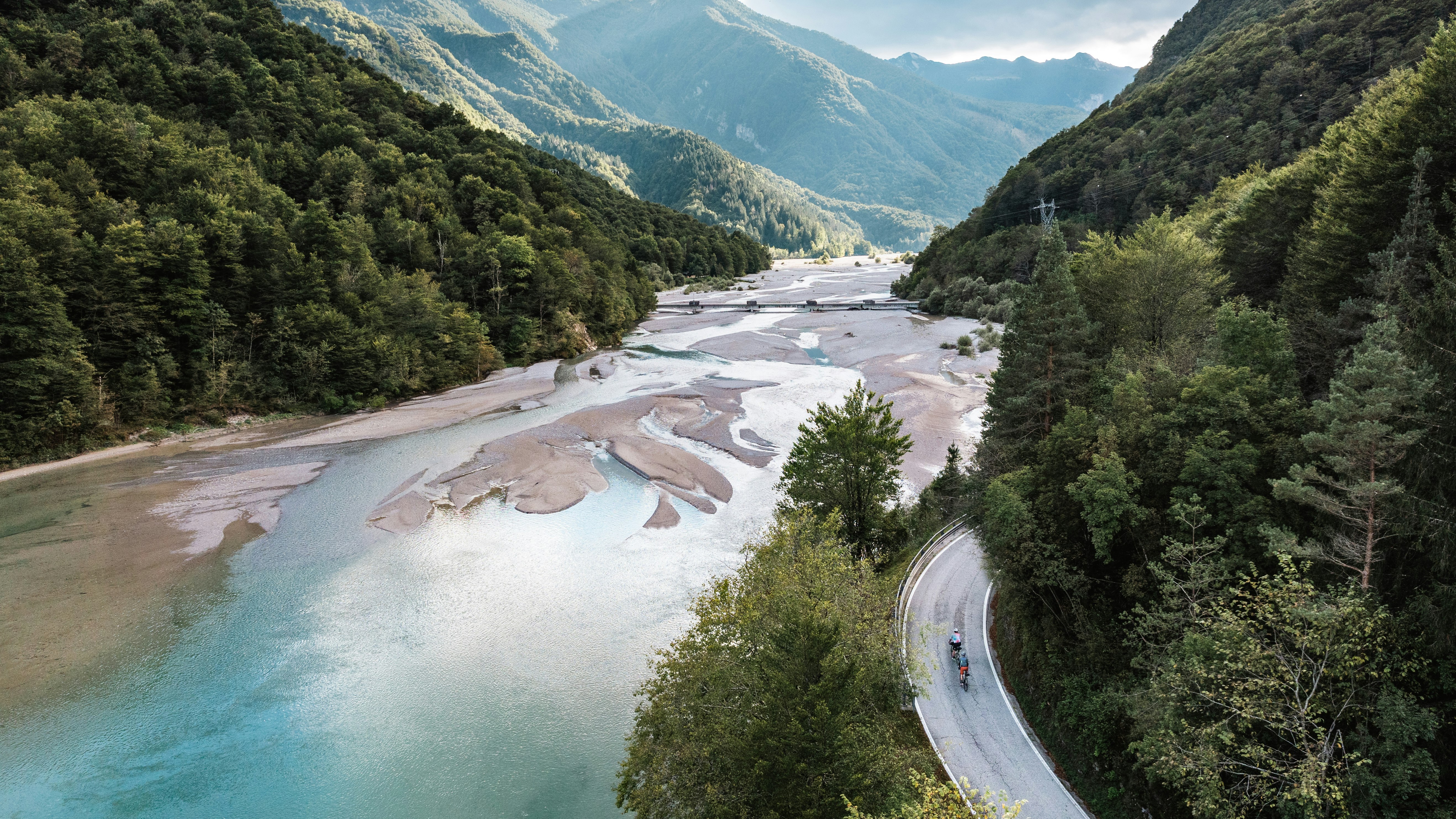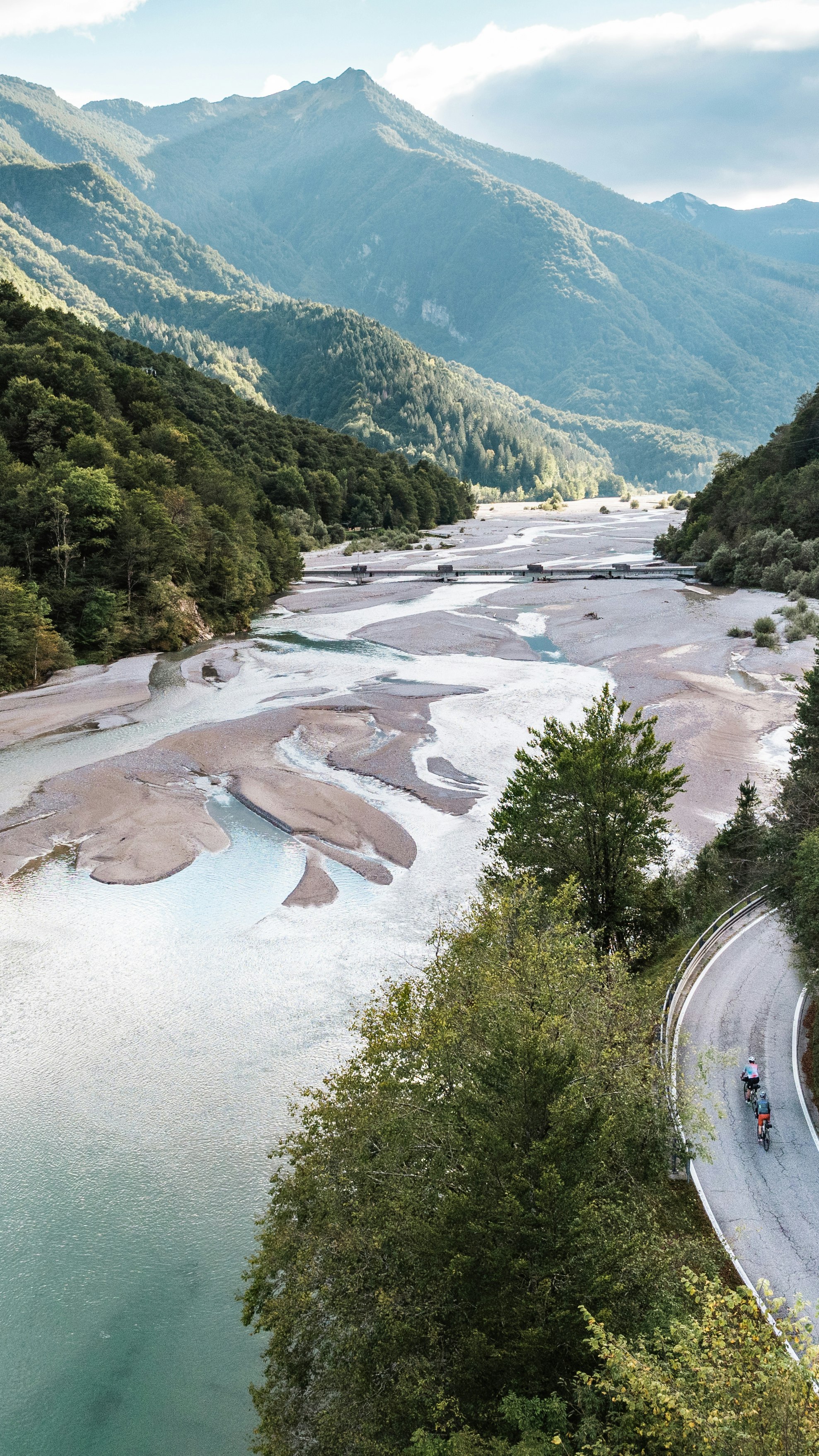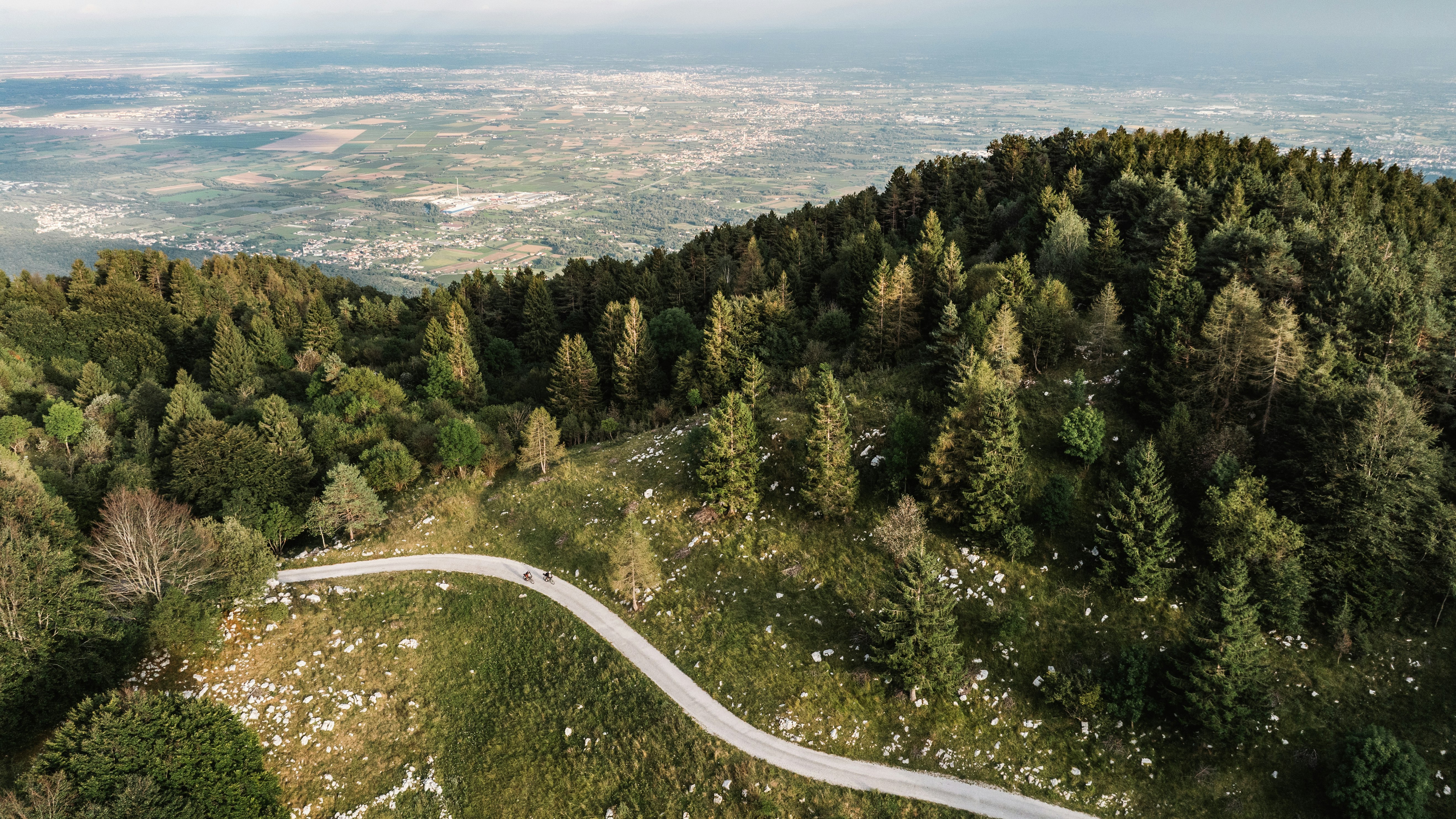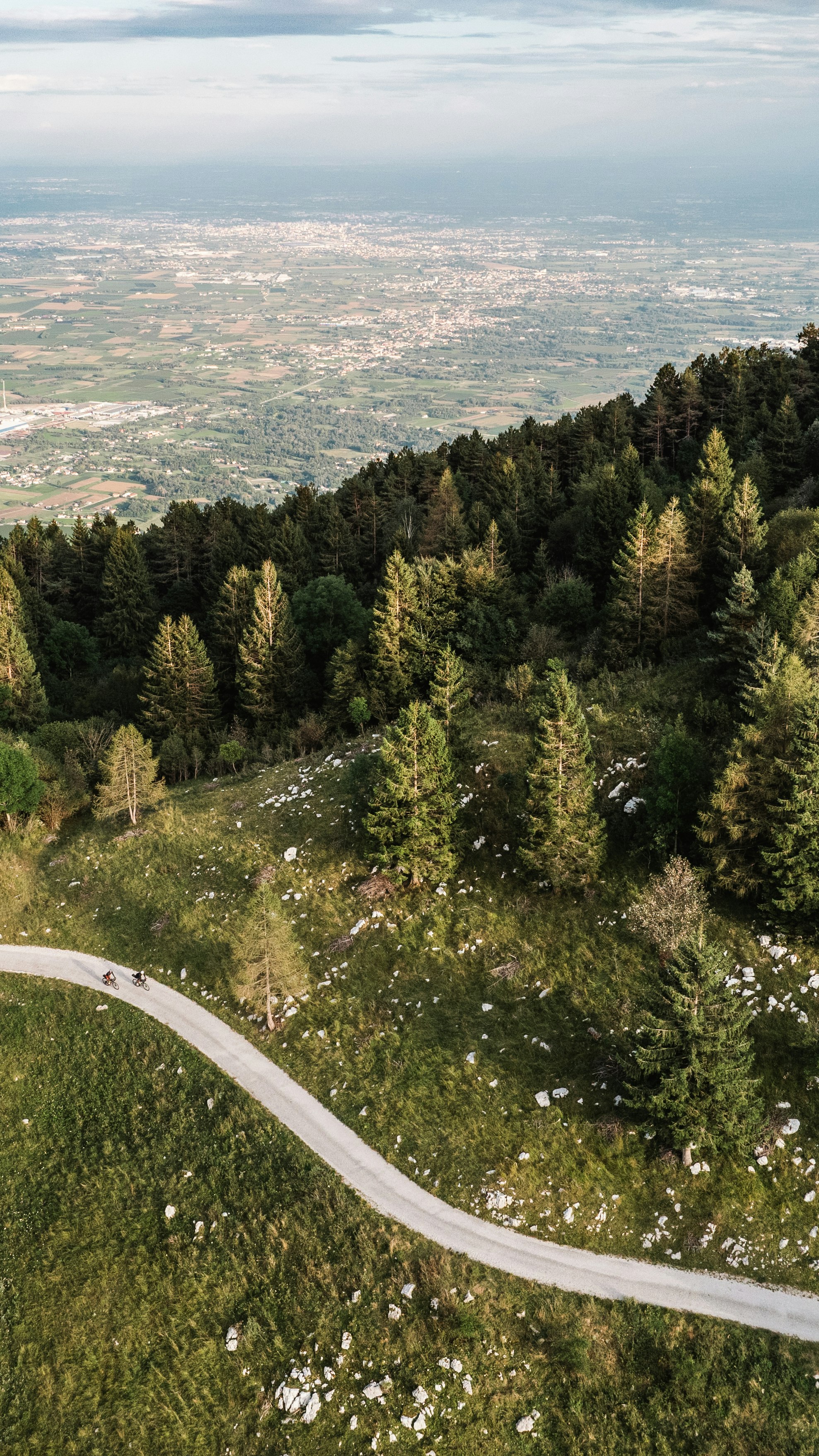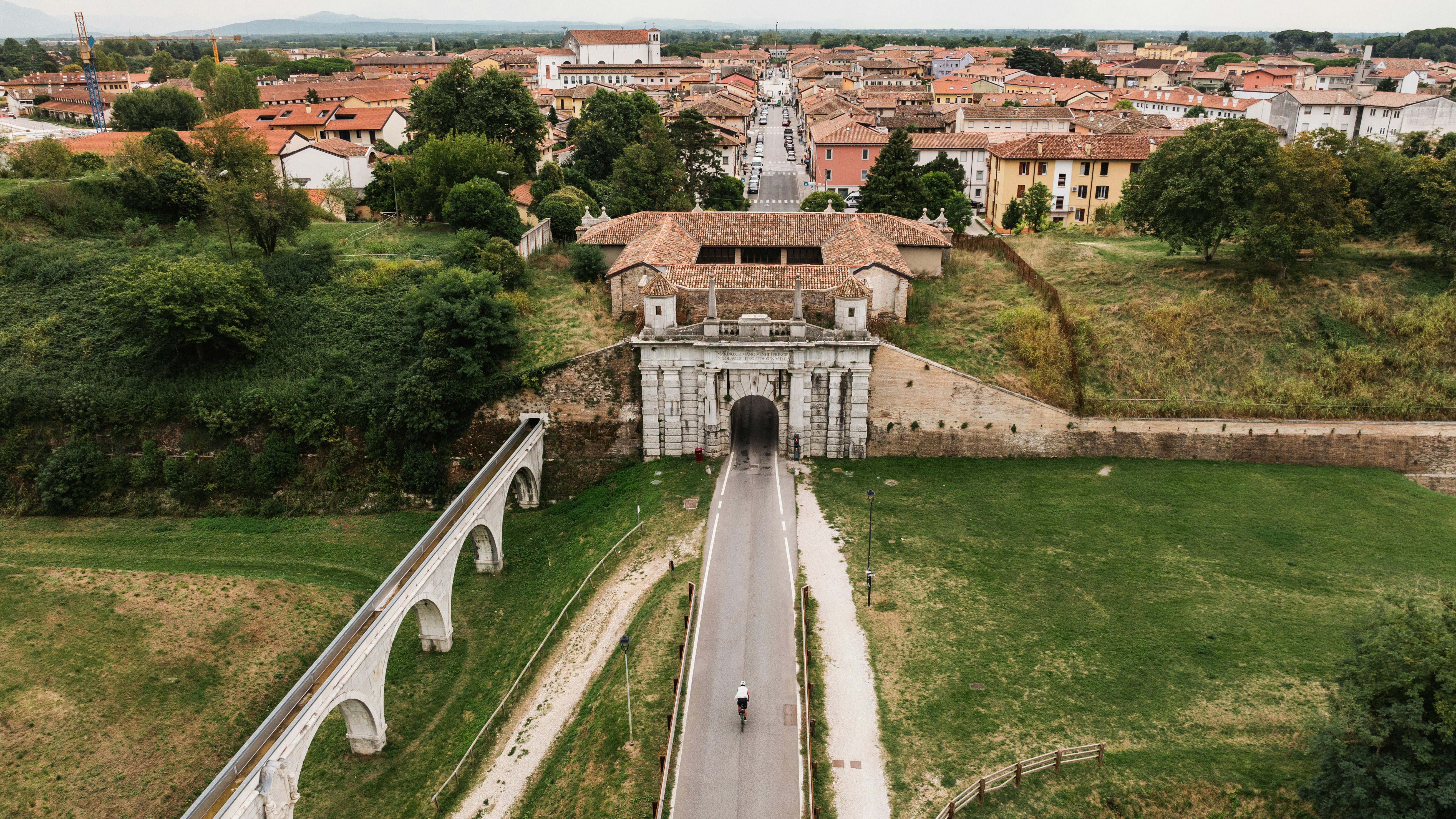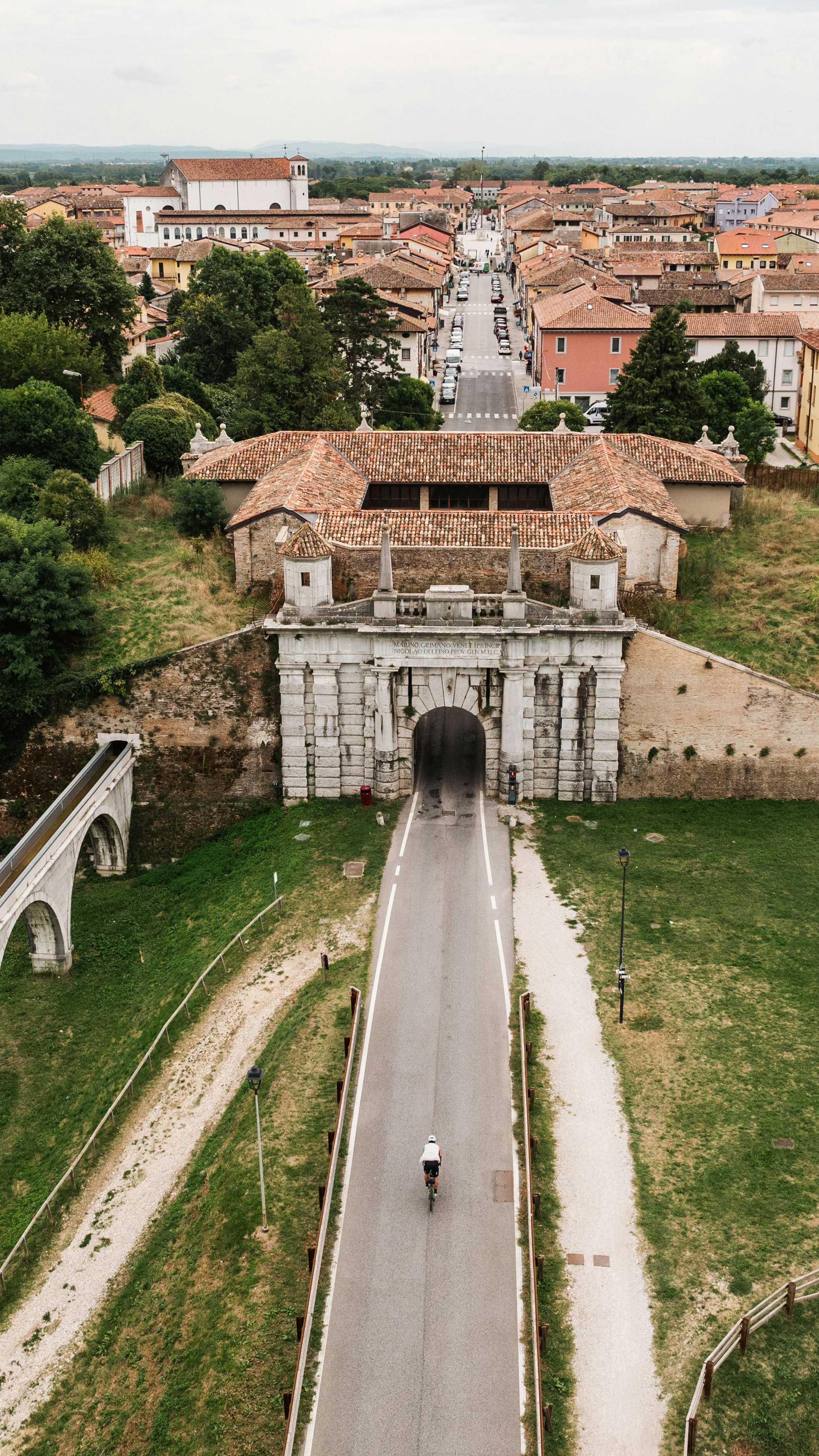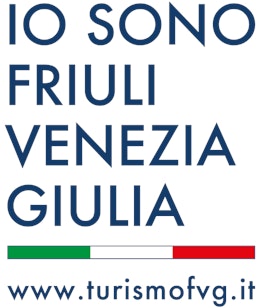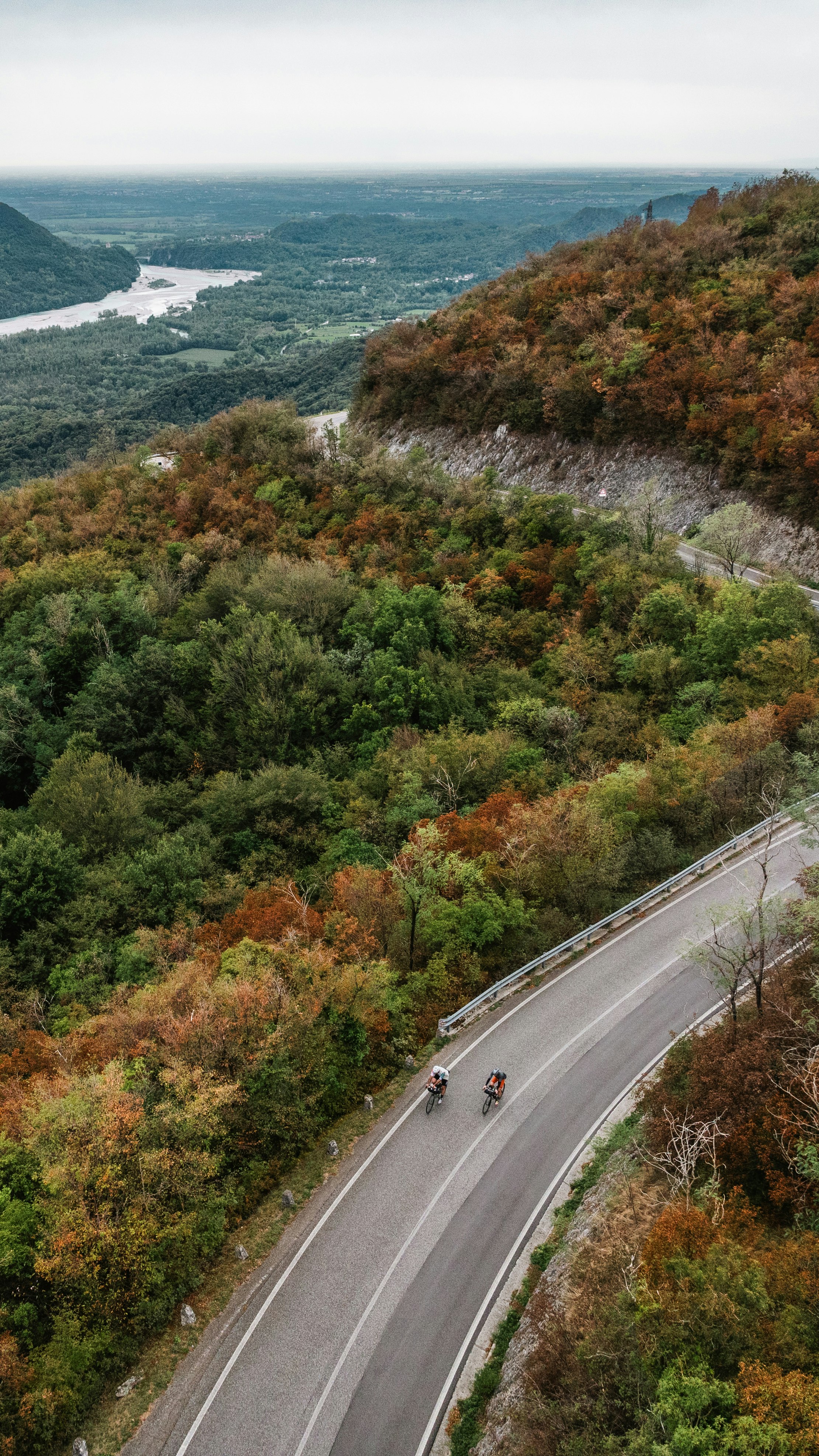
Lost in Friuli
Wandering around Friuli Venezia Giulia means getting lost in a land where people, languages and traditions have always blended. A land as colourful as its inhabitants.
Period
Apr - Nov
Elevation difference
5489 m
Total Length
437 km
Duration
4/6 Days
T
As a starting point we chose Gorizia, a city as hybrid as none other. Half-Italian and half-Slovene, it falls within both borders of Friuli and Venezia Giulia, it lies on the plains but with its back against the Pre-Alps, just twenty kilometres from the coast.
With its twin Nova Gorica, it will be the European Capital of Culture in 2025.
From Gorizia we ride northwards, crossing a bridge over the Soča River where the road begins to climb. We immediately realize that Nievo's compendium, is not inaccurate, but somewhat incomplete.
Alpine flatland and lagoon, said the hero of our unification of Italy, but he had forgotten to mention the hills, as those of the Collio we are crossing.
The Collio is a bit like Chianti and a bit like Monferrato in Piedmont, but far less stereotypical. And it’s the second half of September, harvest season, so we see the place pregnant with yellow bunches of Ribolla grapes and black bunches of Schioppettino.
We resist the temptation of stealing some, but give in to that of doing the occasional bit of drafting on the tail of a tractor when we pass one loaded with grapes, returning to the winery.
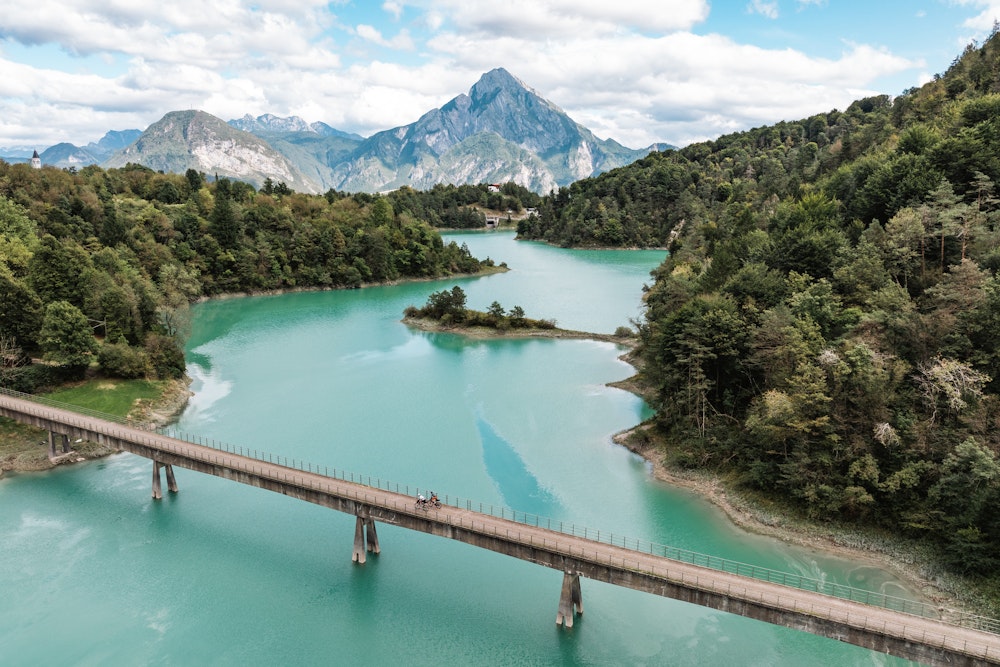
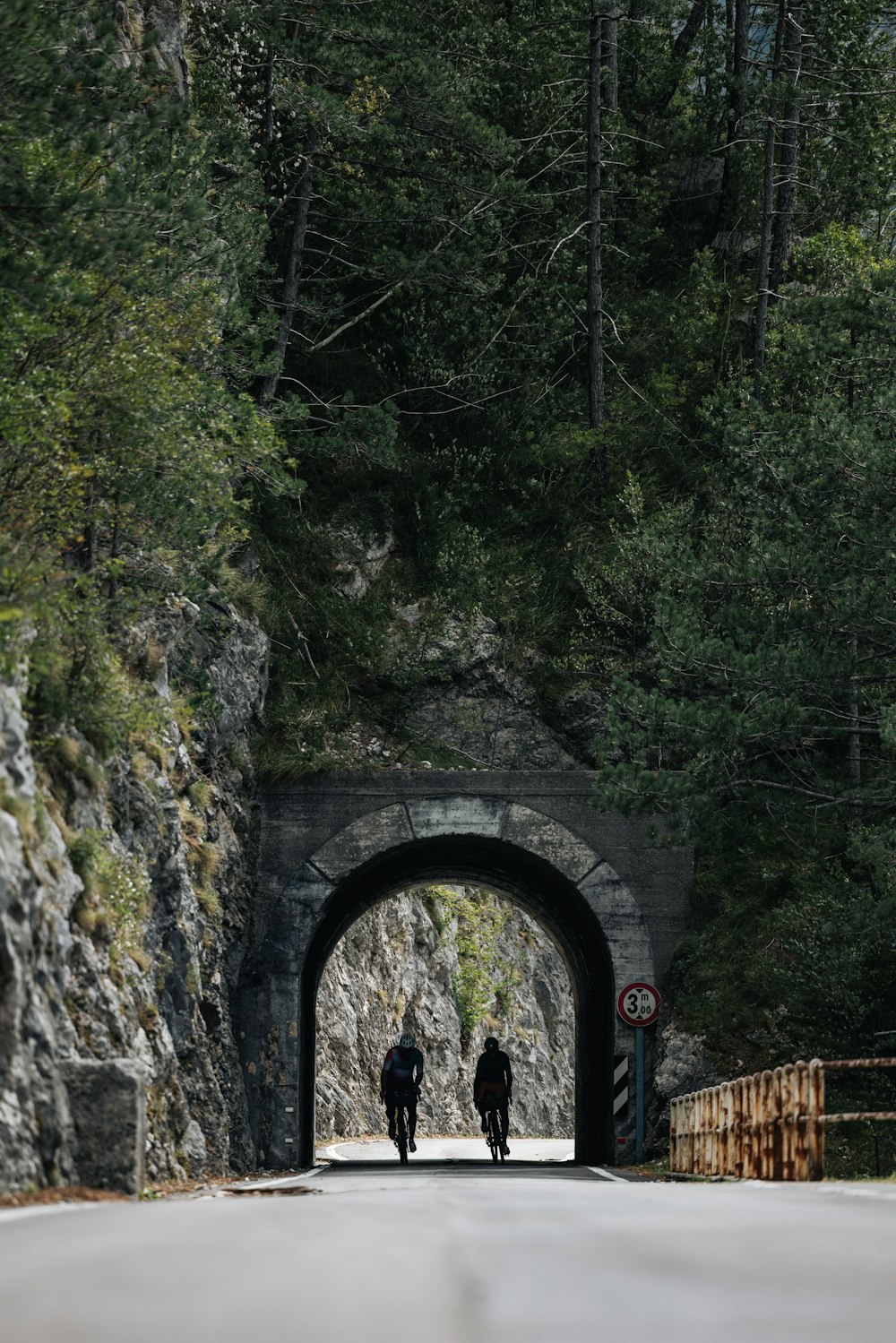
But in San Daniele we are going to stop, partly because of the rain that has started falling, partly because it is the home of the DOP (Protected Denomination of Origin) prosciutto ham that takes its name from here, and mostly because here there’s much of that sense of things that prompted us to come here. Because the secret of San Daniele is its geography. Up on the hills with the river Tagliamento at its side, the mountains behind and the sea in front, where salty winds blowing from the south merge with alpine currents from the north. They stay here to dance together, a bit of Waltz and some Balkan, creating that ideal microclimate for prosciutto to be dry-cured.
We cross the long gravel slip of the Tagliamento near Peonis, the hamlet of Trasaghis where in 1927 Ottavio Bottecchia, the hungry, sharp-nosed cycling hero was found close to death. Just a hundred years ago he had become something of a god in France by winning the Tour, the first Italian in history.
In Forgaria del Friuli we take on the first climb of the trip, some fifteen kilometres at an average of 6% gradient to Monte Prat.
The hairpin bends all have names as on the great alpine climbs, Volt di Mont, Volt da Las Beorchias, Volt di Bedoi, Volt dai Tisins, and so on, up to the top of the pass, at precisely 900 metres. We figure out that we have chosen the right trail because neither going up nor coming down on the other side do we come across a single car, not a single motorcycle, not even a moped, nothing, and this will also be the case in the short ascent to Val d'Arzino, where we will sleep tonight.
We stop at the trattoria Da Renzo in San Francesco, a hamlet of Vito D'Asio. The whole municipality has 719 inhabitants, and San Francesco has about 40. The trattoria is run by two brothers, and Davide, one of the two, as we drink a taj of ros (a glass of red) with him before dinner, tells us that theirs is not just a business, also having a social function. They sell tobaccos and newspapers at the restaurant’s bar, they have a small grocery store next door, and every month they make the rounds of the elderly of the hamlet to bring them full gas cylinders and pick up the empty ones.
We continue to chat with Davide after dinner, this time over a grappa of rue.
He tells us about the beauty and difficulty of living and working in places like these, and we think about the importance of people like him who preside over these lands, not only for the few local inhabitants but for all the others who come here in the summer from the plains to find some fresh air and for all of us who are just passing by.
Like the highest branches of the trees, the ones we usually never see. But that reach with their leaves close to the sun and are essential for the photosynthesis of the whole plant.
The next day we immediately start climbing toward Sella Chianzutan. At one point we see the indication for Pozzis and underneath another smaller, handwritten sign that reads Little Motorcycle Museum. We look at each other, going there means going down when we should be going up, losing elevation instead of gaining it. But then we decide. Travel is itself a detour from life, and to detour from the itinerary is perhaps like travelling twice.
Never really been big motorcycle fans, but as soon as we get there it is clear we made the right choice. The creator is the Cocco, the sole inhabitant of Pozzis, a hermit of sorts who decades ago chose to retreat up here.
The museum collects about 20 motorcycles, all vintage, from the 1930s to the 1950s, none of those monsters of speed and noise that you usually come across on the roads. Impossible to tell where the museum ends and his house begins, and vice versa, not least because the porch is actually for all intents and purposes a workshop where a 1937 Harley Davinson’s under restoration is on fine display.
Cocco, almost eighty years old, set off in 2018 from Pozzis toward Samarkand on a motorcycle of the late 1930s. Travelling with him was a young filmmaker who made a documentary that went on to some success. Judging by the trailer on YouTube, the success is well-deserved.
When we say goodbye and congratulate him on his collection and his adventure Cocco replies, in full hermit style, “It's nothing of mine, nobody owns anything, we need to let go of it all.” And we do let the last few kms of the ascent go and slip away, then those of the descent that take us on the edge of Tolmezzo, the capital of Carnia.
Our itinerary again bypasses the main centres, but a visit to Tolmezzo would be worthwhile if only to see the Albergo Ristorante Roma, where according to some in the 1950s a dessert was invented that would later become popular throughout the world, the tiramisu.
But instead, we turn westward, we cross the Tagliamento once, twice, three times again, until we attack the second climb of the day, toward Forcella di Monte Rest, seven kilometres through a forest of beech first and fir later.
The Tour of Italy passed through here in 2020 with the Rivolto-Piancavallo stage won by Tao Geoghegan Hart, who later also won the overall classification of that edition. Along the hairpin bends the asphalt is almost like velvet, and we wonder whether today is a racing day, as the road seems to have been closed for our enjoyment.
After the summit we dive toward Tramonti: first the higher town, Tramonti di Sopra, and then the lower, ‘di Sotto’ where we stop for the night. But not before tasting pitina, a smoked meat sausage typical of Val Tramontina.
The next day we set off south, touching on villages and hamlets such as Navarons, Poffabro, Gobbo, and descending toward Maniago on the old road that runs alongside the Colvera stream.
God bless the new roads, we think, if this leaves the old ones free for bicycles, for hikers, and for rock-climbers, like those on the cliff to our right.
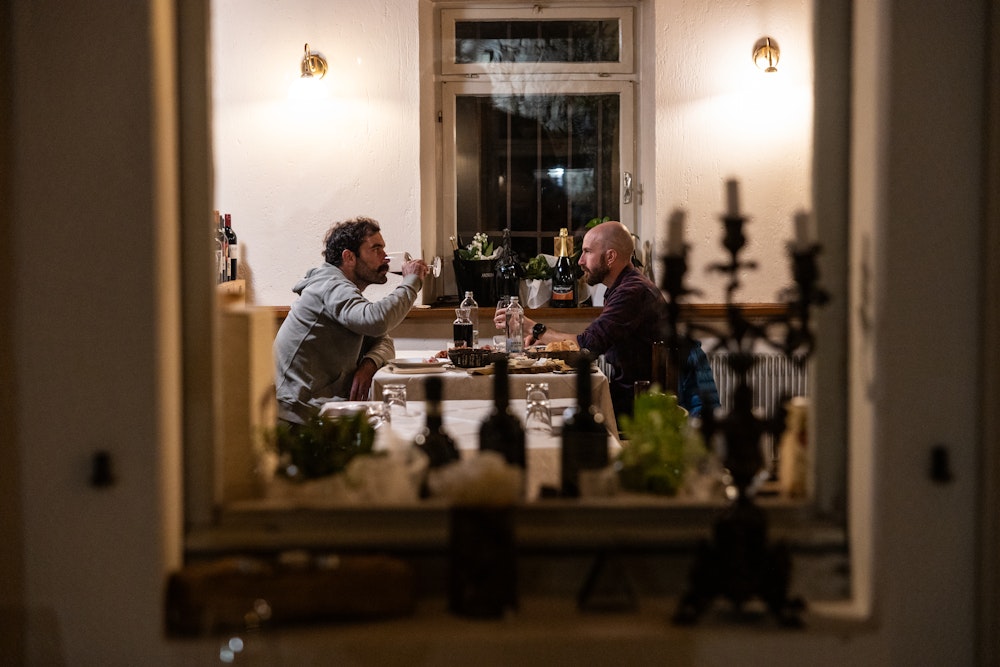
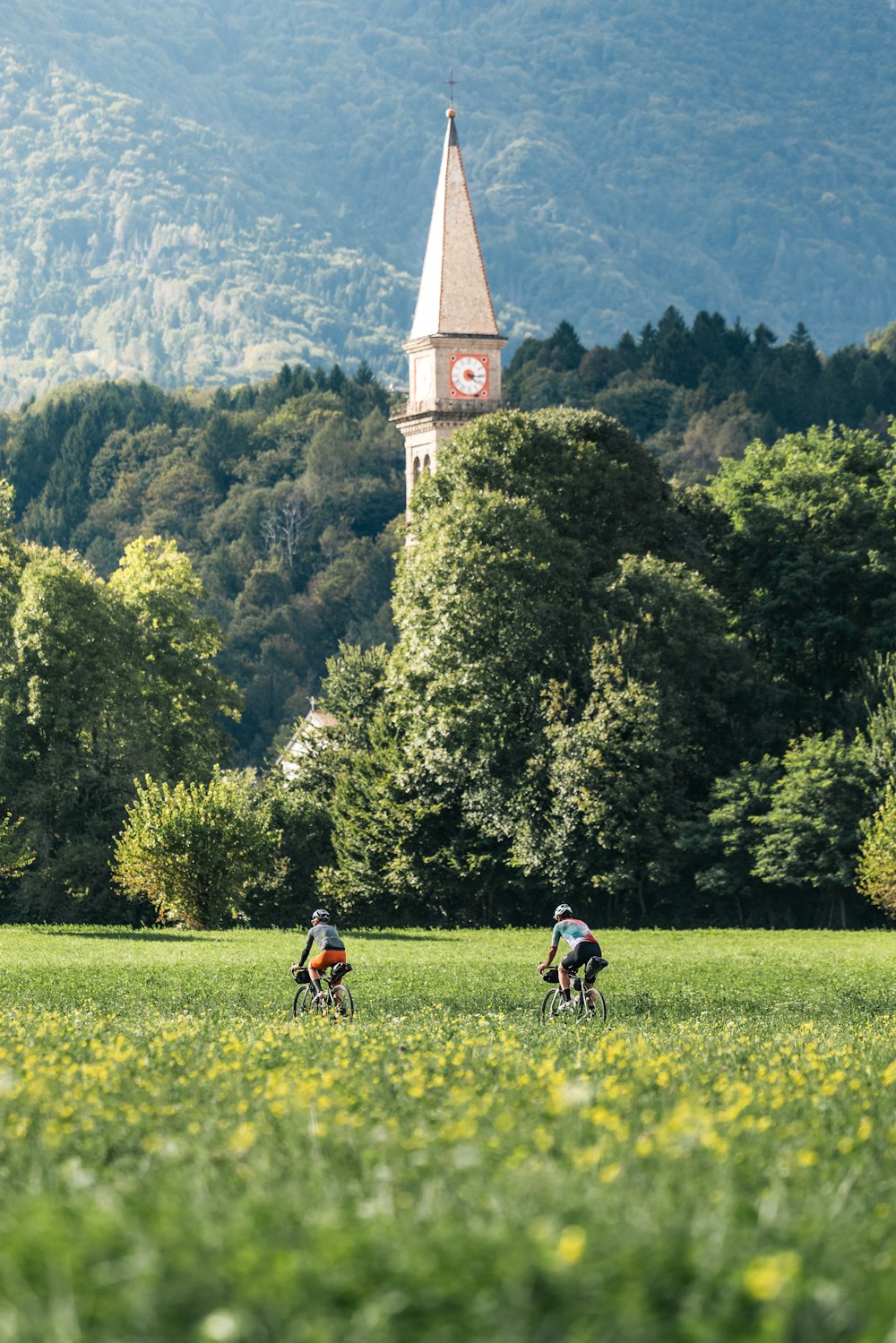
The road we will take has a beautiful name, Venezia delle Nevi (Venice of the Snows), that brings to mind another Ippolito, Ippolito Caffi, with his painting of a whitewashed Queen of the Adriatic. And like Venice the road, half asphalt and half dirt, is closed to traffic, with a steady gradient of around 8 percent. Here the advice, for those using a Garmin, is to turn off the ClimbPro mode that shows every tiny detail of the climb.
No use checking every half-minute how much elevation gain is missing, what gradient is the next hundred meters is or when the next hairpin bend is going to be. The advice is to turn everything off and just try to stay inside the climb, as if this was a Zen exercise, not wishing for this to finish soon, but rather thinking that it is endless. After all, this is a journey, not a long segment on Strava.
We stop at a hairpin bend just below Malga Campo Budoia, a shepherd’s cottage and pasture. And there it is, the Friuli universe, in all its boundless variety. The plain unrolls before us over those famous sixty miles. There at the far end shimmer the lagoon of Marano and the gulf of Trieste. To our left rise the Julian Alps with Monte Canin, the Pre-Alps with Matajur and Kolovrat, and then on and on to the end of the world, one might think.
At the end of the climb, we look for a beer and stop in the first place that seems to promise us one, Malga Costa Cervera. But in Friuli, we have learned by now, when you look for something, you always find something more.
Beer is brought to us by Annalisa Celant, thirty-nine years old with more than half of which spent up here every summer continuing the job started in the 1950s by her great-grandfather.
This malga is one of the very few remaining dairies in Friuli using the traditional method. Every morning Annalisa lights the fire under the large copper caliera, heats the milk from the night before along with the freshly squeezed one, adds rennet and turns it into cheese, or rather into çuç di mont, a Slow Food promoted delicacy.
The long descent brings us back to civilization, Caneva, Sacile, Cordenons, and for the last evening in Friuli we’ll be in Casarsa della Delizia.
Before setting off again for the last leg of the journey, we go to the cemetery to say hello to Pasolini, who is buried here with his mother under a laurel tree, the symbol of poets.
But this is also the place of birth of another great character, not as well-known but almost as special: Ezio Vendrame, a soccer player and writer, whose story is too long to tell here.
Except for one thing. When Gianni Mura asked him for an interview he gave him an appointment at the cemetery. “When I’m in Casarsa, if I can, I always come here to see Pasolini,” he told him. “He’s the last living person in the village.”
Then more dirt tracks through corn and soybean fields, riverbanks and the nine-pointed star of Palmanova, a Venetian architectural wonder.
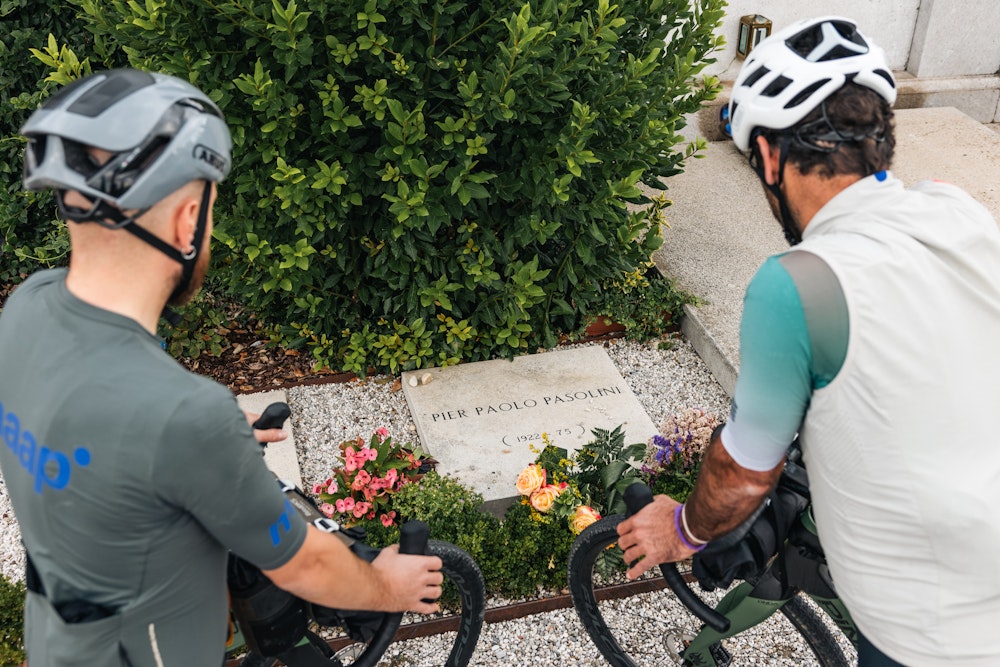
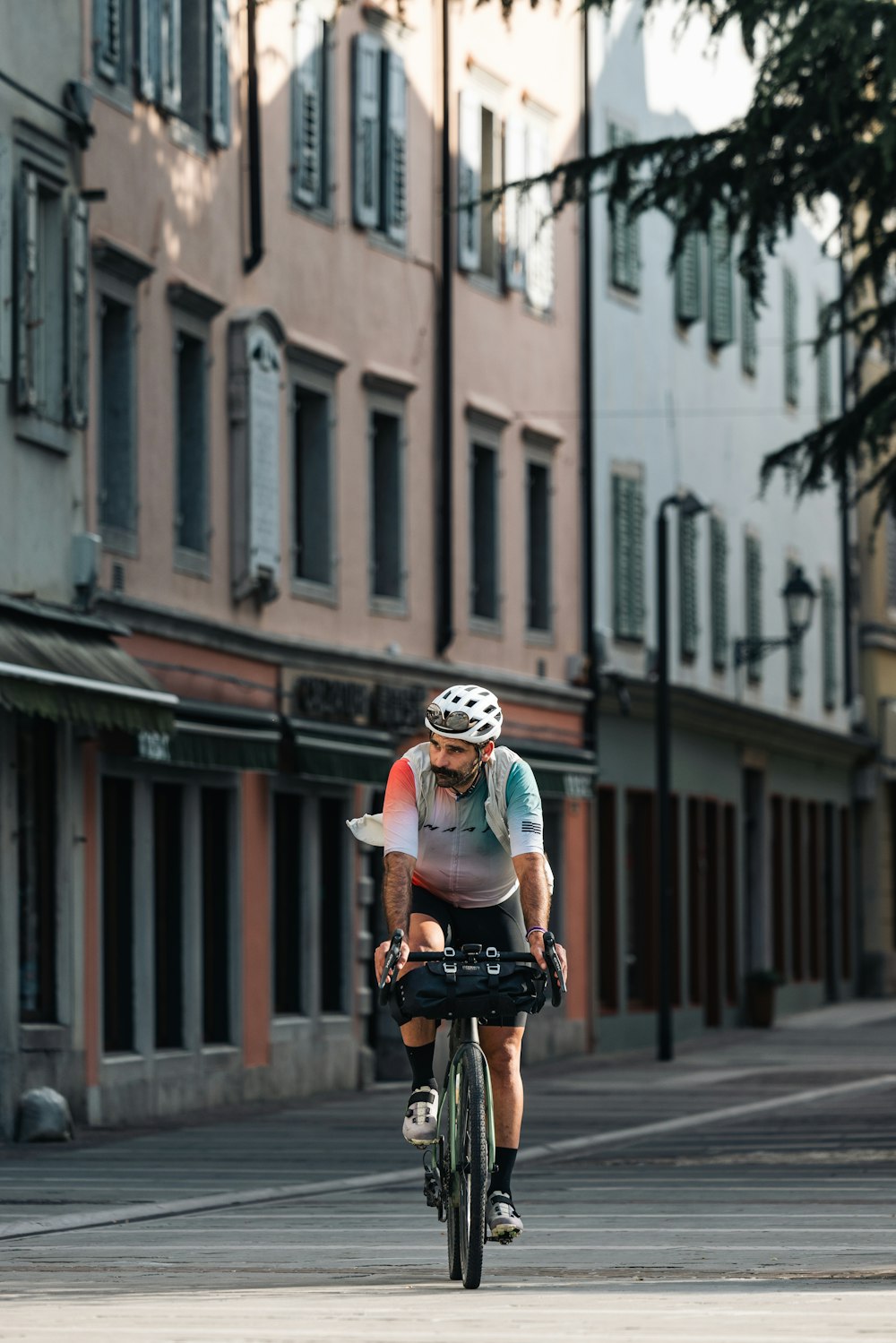
We arrive in the square of Gorizia after having covered 435 km since our departure four days ago. We have cycled along dirt roads, bicycle paths as wide as provincial roads and provincial roads as quiet as bicycle paths, hills, plains and mountains, and now yes, we can say one thing.
Ippolito Nievo was right, Friuli really is a small compendium of the Universe.
But a Universe cannot fit inside a few pages, not even those of a carefully edited magazine like this one.
The only option is to hop on your bike and go and explore it.
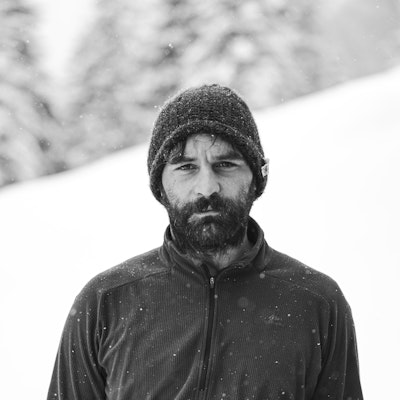
Texts
Fabio Dal Pan
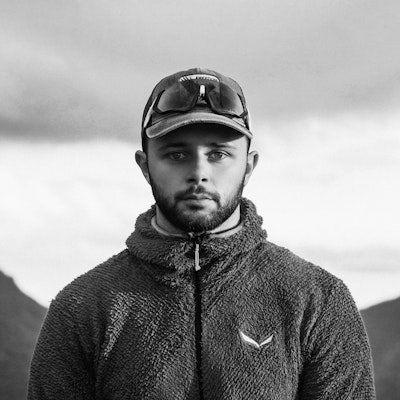
Photos
Alessandro MimIola
Cycled with us
Fabio Dal Pan, Michele Monego
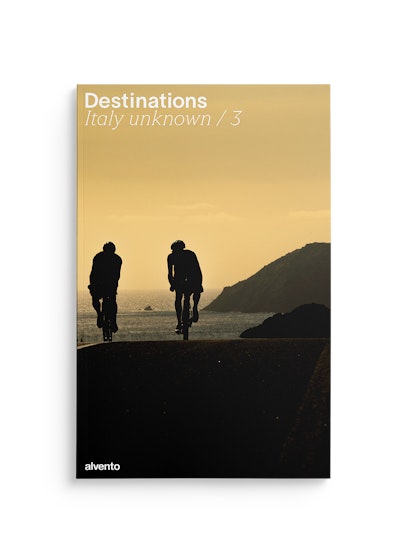
This tour can be found in the super-magazine Destinations - Italy unknown / 3, the special issue of alvento dedicated to bikepacking. 9 little-trodden destinations or reinterpretations of famous cycling destinations.
